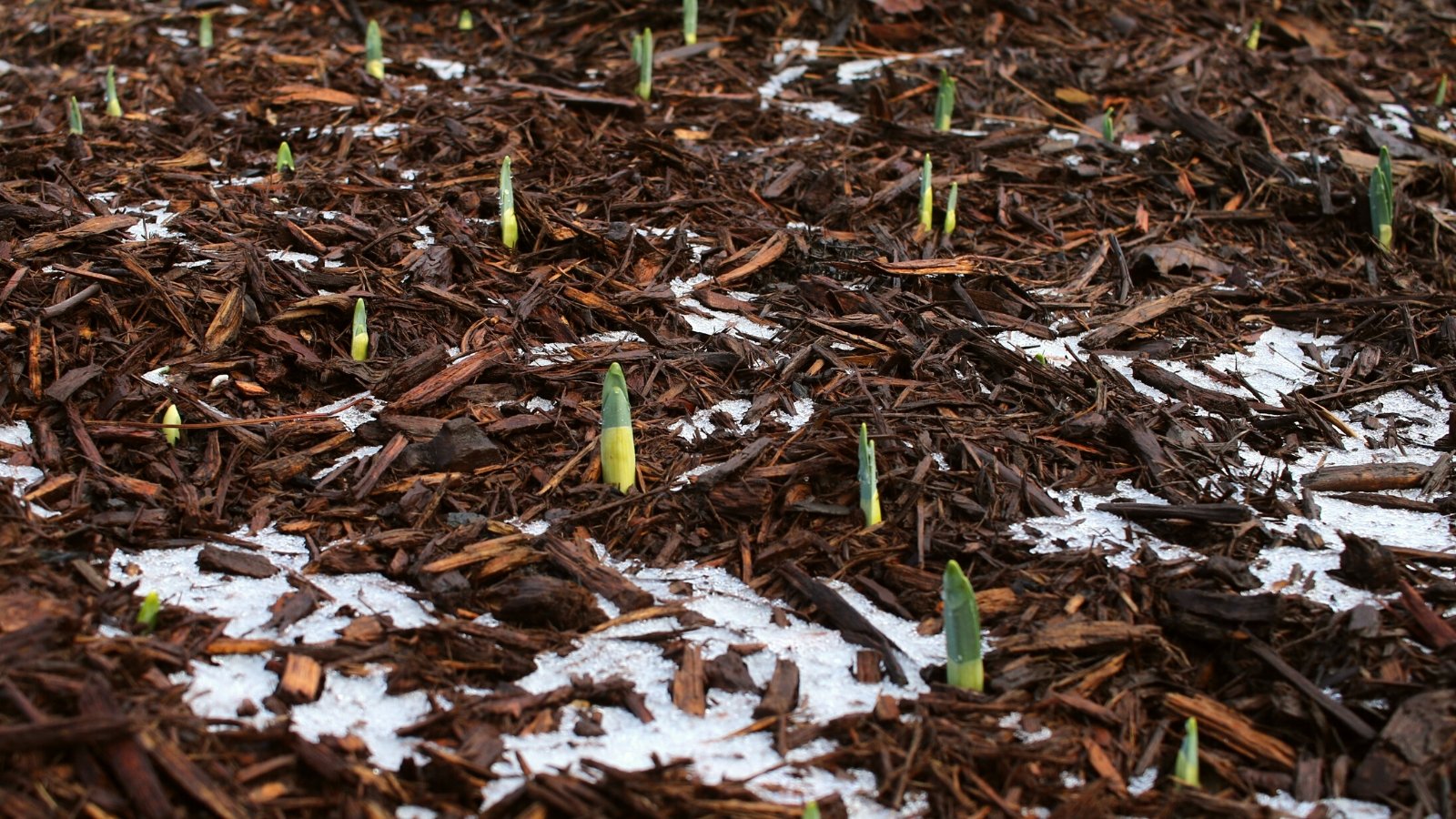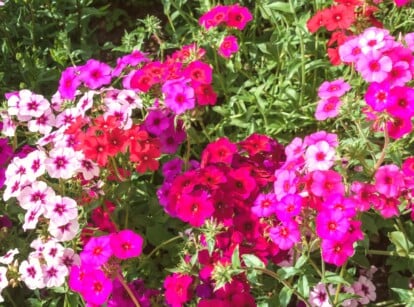What To Do When Your Bulbs Come Up Too Early
Have your bulbs begun to sprout earlier than expected and you aren’t sure why? There are a couple of reasons this could happen, and luckily, they are easy to fix! In this article, gardening expert Jill Drago will discuss why this is happening to your spring beauties and what you can do to remedy the issues.

Contents
Spring bulbs require next to no maintenance. We plant them in the ground in fall, and we are blessed with beautiful flowers in springtime! Some bulbs, such as daffodils, are perennial, so it is a one-time simple task that can last for years to come.
Changing climate and unseasonal weather can cause our precious bulbs to emerge from the ground too early. A warm streak in December sent my muscari on a growth spurt this past winter. What a bummer. This is often out of our control, but a few things can give our bulbs their best chance.
If you are looking for tips and tricks to keep your bulbs growing happily, and at the right time, keep reading. We will cover what to do when your bulbs emerge early, as well as how to prevent this from happening in the first place.
Why Are My Bulbs Emerging Too Early?

Typically, spring-blooming bulbs that were planted in fall are not expected to emerge from the ground until late winter or early spring. However, plants have a mind of their own and they respond to their environment regardless of what you have planned for them.
Flowering bulbs are amazing. I have been planting bulbs since I was a child. To me, they were just dried-out plant balls. Of course, I had a lot to learn. From the moment you plant them, they begin growing. Roots begin to form, and the leaves and blooms inside of the bulbs know it is time to prepare for warmer temperatures.
Unexpected warm temperatures, as well as a lack of snow cover, can cause your bulbs to emerge earlier than expected. Snow cover is helpful because it keeps the soil temperature low. Once the soil temperatures begin to rise, the bulbs are ready to get growing! This is when you may notice a few inches of green growth popping out of your soil.
Now What?

Unfortunately, once your bulbs begin to emerge there is no putting them back in the ground. Depending on when this is happening, the foliage may just hang out until the blossoms are ready to emerge, or the foliage may die back until the spring when the temperatures are warm enough.
Adding a thick layer of leaves or straw to your emerging bulbs can help to protect anything that has sprung out of the ground. While this will not reverse anything, it can keep your plant safe from frost. Keep the mulch fluffy, and do not compact it. You just want to insulate them as well as protect any of the foliage growth that has emerged.
How to Prevent
Since there is no “fix” to bulbs that emerge early, we need to do our best as gardeners to prevent them from popping out of the ground too soon. This is simple and only requires a bit of attention while we are planting.
If you are worried that you have planted your bulbs incorrectly, you can pop them out of the ground in the fall and replant them. Allow all of the foliage to die back before doing this to ensure that they are healthy and will survive a transplant!
Choose the Right Bulbs

Many bulbs may begin to emerge from the soil a bit early, and this is not a concern. The foliage may be slightly damaged from frost or cold temperatures. What you don’t want to see is the flower buds popping up out of the soil. If the buds are damaged by frost, they will not recover, and you will not get to enjoy their blossoms this year.
| Early Spring | Mid Spring | Late Spring |
| Snowdrops | Daffodils | Tulips |
| Crocus | Mid-Season Tulips | Allium |
| Muscari | Fritillaria | Lilies |
| Hyacinth | Iris | |
| Early Daffodils | ||
| Early Tulips |
Plant Properly

Whether you are planting a handful or a yard full of bulbs, using a power auger makes the job quick and neat and ensures that the holes are at the correct depth. The only other tools you will need are your hands and of course, your bulbs!
- Consider the design and layout of your bulbs. I like to lay them out on the soil so I can ensure correct spacing while also getting a feel for what the plants will look like in the springtime.
- It is time to get digging. Each type has a different planting depth. This is important because it ensures that they will be well-insulated and will get the correct amount of time in colder temperatures.
| Bulb | Planting Depth |
| Allium | 14 inches |
| Daffodils | 9 inches |
| Tulips | 10 inches |
| Hyacinth | 5 inches |
| Muscari | 4 inches |
| Crocus | 1 inch |
- Position the bulb right side up. Each shape is a bit different, but you should be able to see the bottom and the top of your bulb. The bottom may have something that resembles roots, while the top is typically slightly more narrow. Plant it roots down. Bulbs are amazing and will likely bloom even if you do not take the time to position them correctly, but you will have more success if you take a few extra seconds to get this right.
- Water when you are done planting. This will help to settle the soil and eliminate air pockets.
- If you have critters in your yard, placing a net over your bulbs can be helpful or you could use red pepper flakes or a spray such as repels-all.
Proper planting is important to ensure the correct bloom time. If they are not planted deep enough, they may begin to emerge too early.
Choose the Right Location

According to the University of New Hampshire Extension Office, bulbs that are planted on the South or West side of your home are most likely to emerge earlier than the other sides of your home.
Most types prefer full sun, but not all of them. Be sure to check your bulb’s needs before planting. This will help to ensure they are growing at the correct rate and will perform nicely.
Prep for Winter

Applying a nice thick layer of organic mulch in the fall (or late winter, depending on where you live) once the soil temperatures have cooled can help to retain nice chilly temperatures for your bulbs.
Organic mulch could be pine bark, pine needles, or ground-up leaves. Whatever you have easy access to will work well. 2-4 inches is the perfect amount of mulch. More than that can result in fewer flowers, while less could invite critters to nibble away at any growth.
Final Thoughts
Spring bulbs are one of my favorite parts of gardening. They are the beginning of a beautiful season in the garden. It can be frustrating when things do not go according to plan. With a few extra steps when planting, you can ensure that your bulbs will arrive on time and as beautiful as ever.









